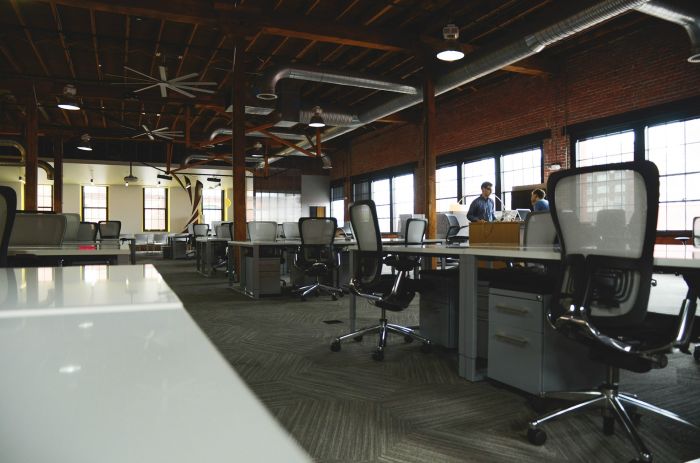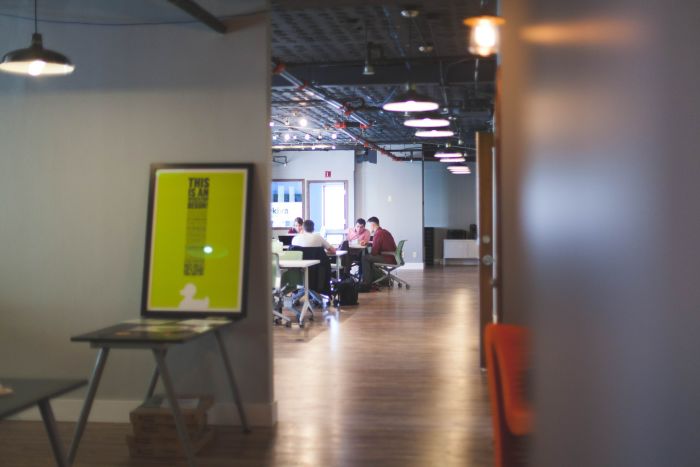
How Open Office Plans Can Create a Sense of Community
About 70% of U.S. offices are designed in the open concept style, with low or no cubicle walls. Despite its apparent popularity, recent studies have shown open offices can decrease productivity and overall employee wellbeing. However, I’d like to make a case for open office plans – if used in the right way and with the right company culture, it can create a better sense of community.
Open office plans are much more aesthetically pleasing than the “cubicle farms” of yesteryear, which is one reason for their initial appeal. Other open plan office advantages include company cost savings and the idea of increased collaboration between teams and departments. Some companies have even used an open office plan to “level the playing field” – that is, putting everyone at the same level regardless of position. Some of these companies even have their C-level employees like CEOs and CFOs sitting with the rest of the team. This can be endearing to some and threatening to others.
Other open office “pros” can quickly turn into “cons” if not embraced by the employees of the company. Lack of privacy and increased noise when compared to traditional cubicles or closed office settings are two of the top complaints.

As a business owner, it’s imperative to listen to employee needs and find a solution that best fits the overall needs of the group. Some positions require increased concentration, such as editors or engineers, who may require complete silence in order to work most effectively. Those in other positions, such as creative, sales, and marketing, can thrive in the open-office environment as this can lead to more opportunities to collaborate and work side-by-side than if cubicle walls or doors and windows separated them. The open office plan also allows for those in junior positions to easily ask for advice from their senior colleagues, without being intimidated by having to get up and knock on their office door.
Hence, the workplace cannot and should not be one-size-fits-all; each person is different and therefore one strategy will not work for everyone. There needs to be room for flexibility in the open office plan, whether it’s quiet rooms available for those who need time to themselves, separate meeting spaces or hang-out places such as lunch rooms or recreation areas, etc.
Additionally, what is working today for a small or midsize team may not continue working in the future, as the company scales. There needs to be a plan in place for the eventuality of growing out of the space you’re in or needing to make modifications such as adding more conference rooms, quiet rooms, or separate offices to accommodate for future needs.

The Optimum headquarters recently underwent an office renovation. Previously, all employees were seated in desks in a bullpen setting: engineers next to sales next to marketing next to analysts. This worked well while we were smaller, but became more of a concern as employee numbers grew (growing overall office noise along with it).
Walls were knocked down to create a more open environment across the entire office and all software engineers and business systems analysts moved to the new space, away from the sales and marketing team (those troublemakers!).
Traditional offices still exist for more senior positions, along with two conference rooms with doors to reduce noise and increase privacy. This change has increased overall employee satisfaction and productivity. Those who need a more quiet atmosphere have what they need, while not taking away the ability for others to collaborate as a team. All team members can still see each other throughout the office, which contributes to the overall feeling of community at the office. At Optimum, we’re like one big family; that’s part of our company culture, and it works for us.
Ultimately, the open office plan may not be suitable for every company or every employee, but here at Optimum we enjoy the perks that an open office provides, such as increased collaboration, a shared music queue, and the ability to practice our long-range Nerf skills.
